5-6 October 2025
With the morning comes cloudy skies and light rain. Our new guide, Jun, leads us through a tiny portion of Omicho Market.
Omicho (also called Ōmichō Ichiba) is Kanazawa’s sprawling fresh-food market, known by locals as Kanazawa’s Kitchen. It has operated since the Edo period (1721) and features over 170 stalls and restaurants.
Sushi for the Senses
We wander through covered corridors packed with produce, pickles, sweets, and local specialties. Also seen are a lot of unrecognizable objects. The ubiquitous green powder and seaweed sits everywhere. However, the star of the show is fresh seafood straight from the Sea of Japan—crab, shrimp, yellowtail, oysters. Fish range in all sizes and colors; shellfish is abundant.
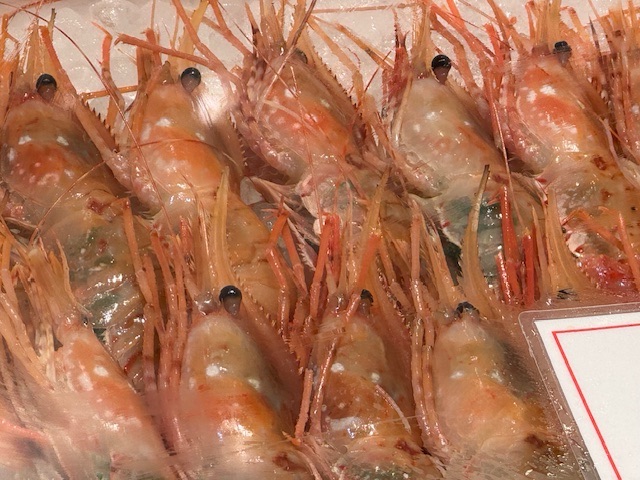
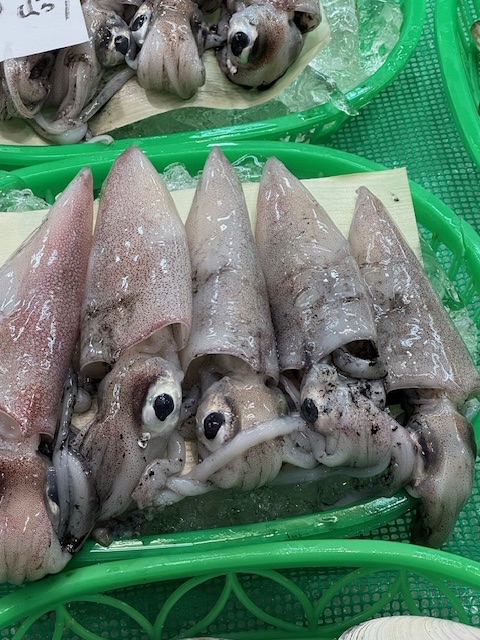
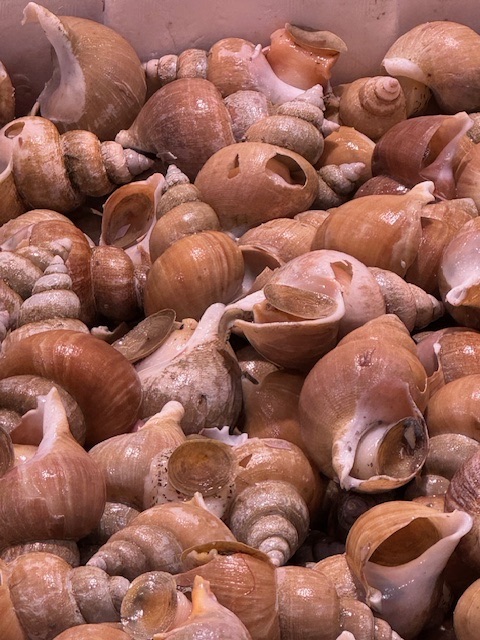
The fresh seafood brings a mild ocean scent, but the hall is clean and well-ventilated—more like the aroma of the sea than a fishy wharf.
Blasting to Kyoto
Around 10:40, we walk the block to Hokutetsu Staton. There, we board the train from Kanazawa to the great city of Kyoto. No regional today, but not the big banana either.
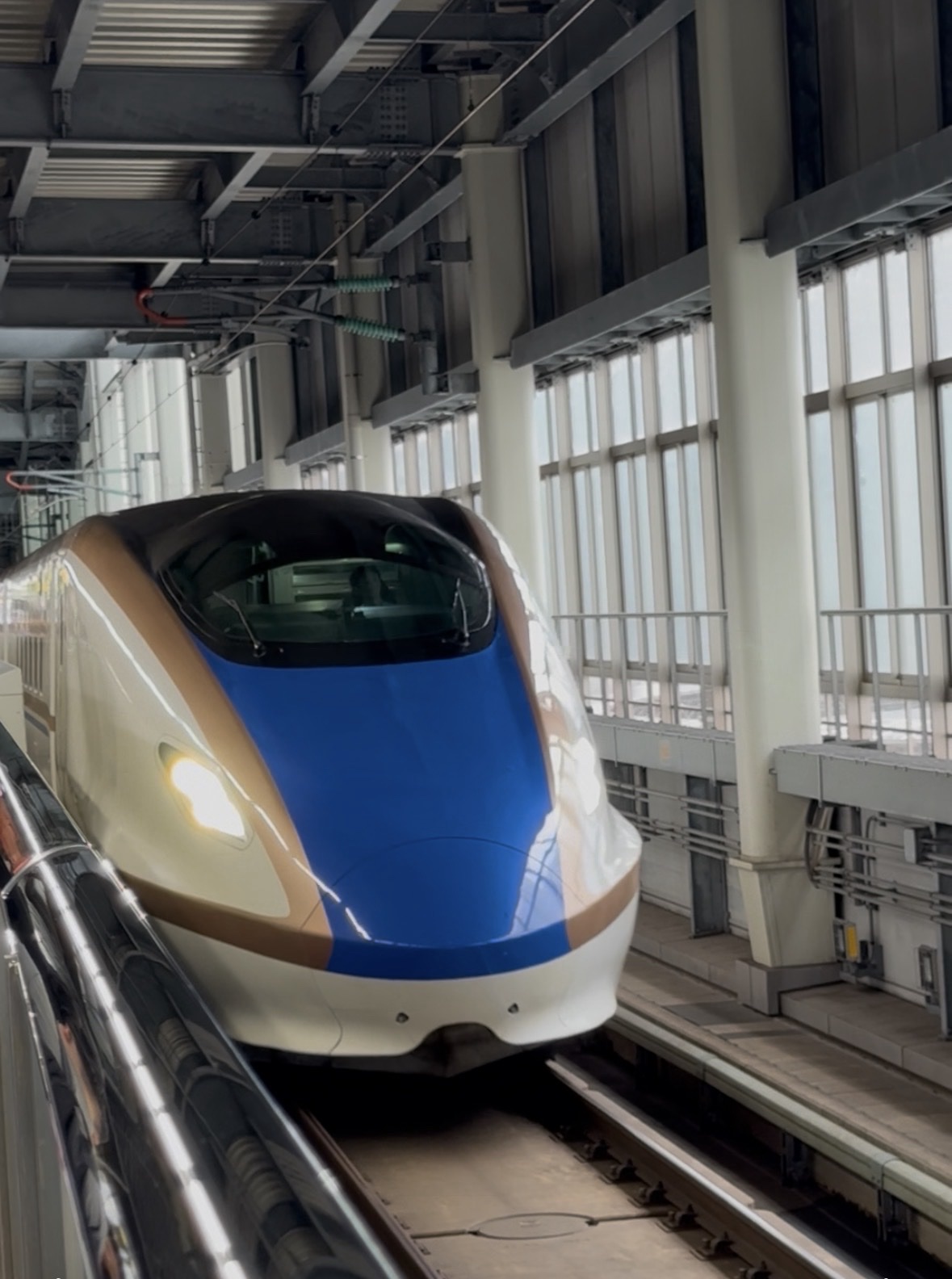
High Speed trains and Japan are synonymous. Riding a Shinkansen highspeed seems like boarding the hare instead of the tortoise. However, not all Shinkansens are alike. Some routes, like ours today, require stops and therefore interrupt direct travel. Trains take longer to reach their destination – but not much.
We depart the station at the usual punctual second. The train car couldn’t be more modern, clean or convenient. Wi-Fi, charging plugs and plenty overheard storage are available.
The Hokuriku Shinkansen is our elegant and graceful limited express train. We travel over the 112-mile-trip between Kanazawa and Kyoto. It’s 57 minutes to Tsuruga Station.
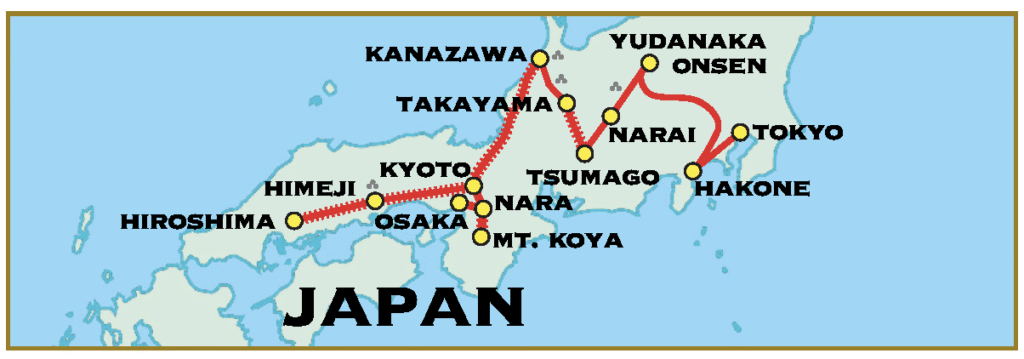
Weaving our way southwest, for some of the distance, we parallel the new Shinkansen tracks. JR has plans to open more stations in the future. I watch plenty of open fields and agriculture with the constant presence of high mountains in the distance. Lake Biwa, largest fresh water lake in Japan, sparkles as we follow its shores. Our speeds have reached a meager but impressive 160 mph.

We make a quick transfer to the Thunderbird, a limited local express, reaching 80-100 mph, for the 55-minute zip to Kyoto. We arrived on the minute.
There’s a long line departing the train and our second guide, Akemi, didn’t make it off before the doors closed and the train left. Thankfully, this happened to the most capable person on the tour. She boarded a return train and joined us for lunch.
Greeted by the Ultra-Modern
Arriving into Kyoto Station, it represents a destination in itself. Kyoto Station is a vast, modern hub—part train station, part shopping mall, part architectural spectacle.
Its soaring glass atrium, endless escalators, rooftop garden, and bustling food halls feel more like a futuristic city than a station. Under the soaring roof of this modern, architecturally beautifully complex lies everything one could desire in a railroad station, including its own hotel.
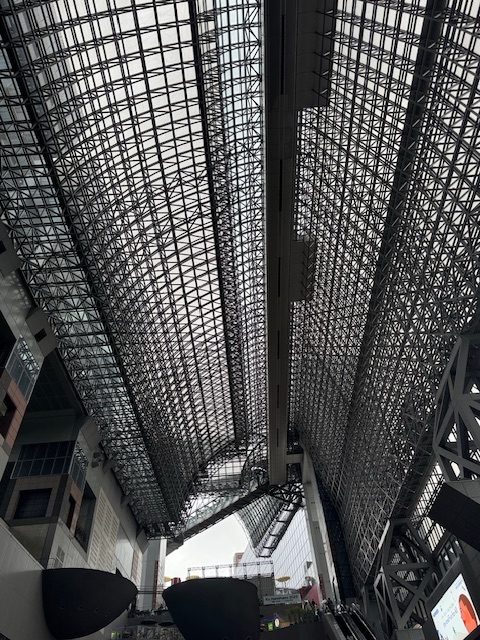
We transfer to our own hotel in central Kyoto, the Umekoji Potel. Located across from Umekoji Park, the ultra-modern facilities include everything from a Game Room to Public Bath, from Library to Music Room. The laundry may take some deciphering. While they provide a self-service drink bar with wines, the hotel also offers the Umekoji Fermentation Factory selling fermentation foodstuffs, including saké and wine. The rooftop terrace offers magnificent views of Kyoto and the mountains.
Three nights at the Umekoji promises to be ultra-enjoyable. My room on the fifth floor offers a marvelous view of Umekoji Park and Tōji Temple. I relax to the rumbling sounds of the local trains and watch the sleek bullet trains silently zip past on their way eastbound and westbound.
Sardines Have More Room
We begin our day boarding a local train. This could be described as a cultural experience or a nightmare. Boarding a local train in Japan is less commuting and more competitive origami.
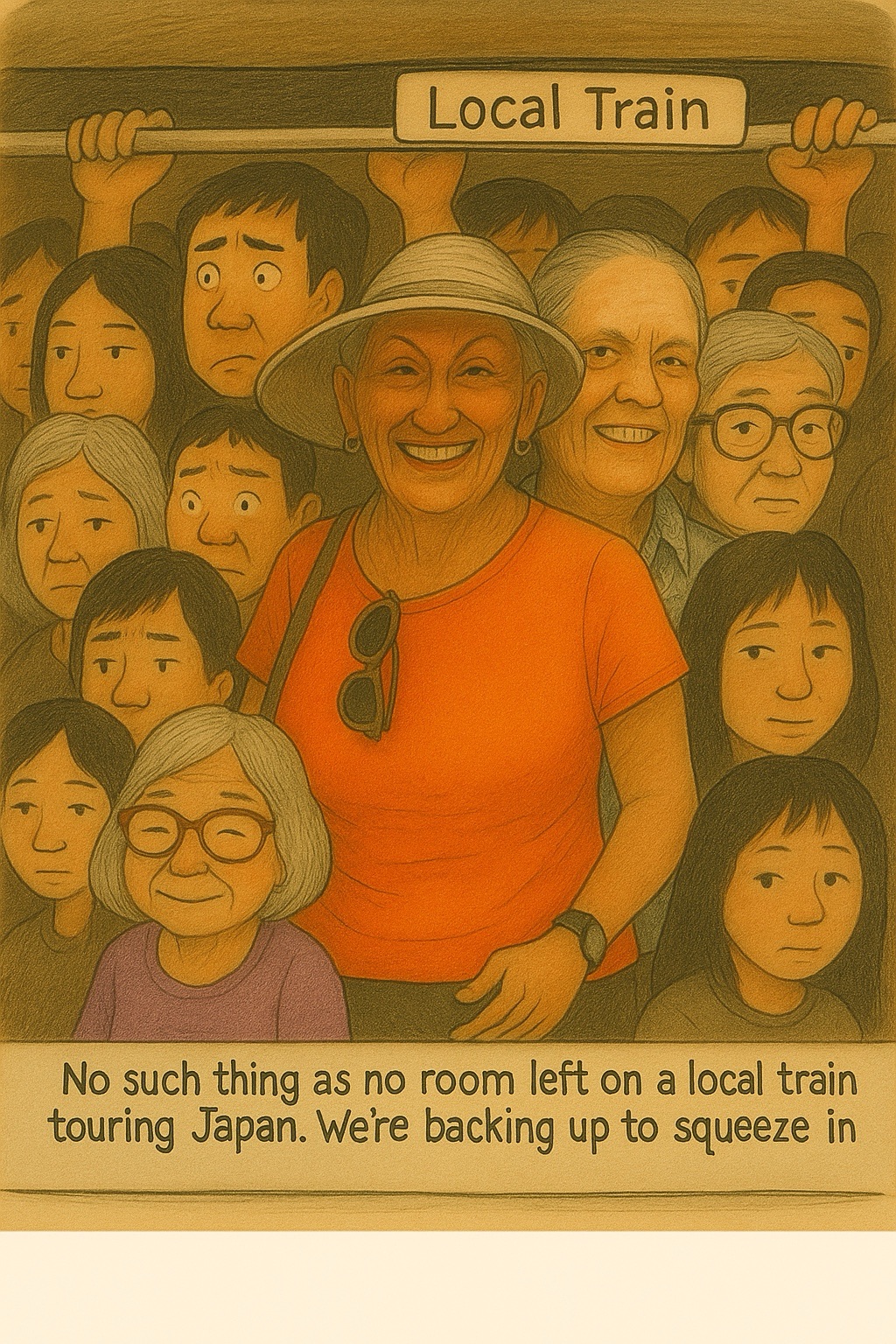
We packed in layer by layer—backs first, bags second, dignity last. No one left behind isn’t a motto, it’s policy. A young woman from Munich nearly donated a body part as the final passenger wedging in. The doors sighed shut only when the train achieved full sardine certification—and perhaps one extra squeeze for good measure
Mount Inari
We arrive at the Fushimi Inari Shrine located above the city and below Mount Inari. It is as crowded as the train. People pack every space. It is over tourism at it worst. (I am told Kyoto is seriously upping their tourism tax in an effort to discourage visitors. Didn’t work for Venice, won’t work here.
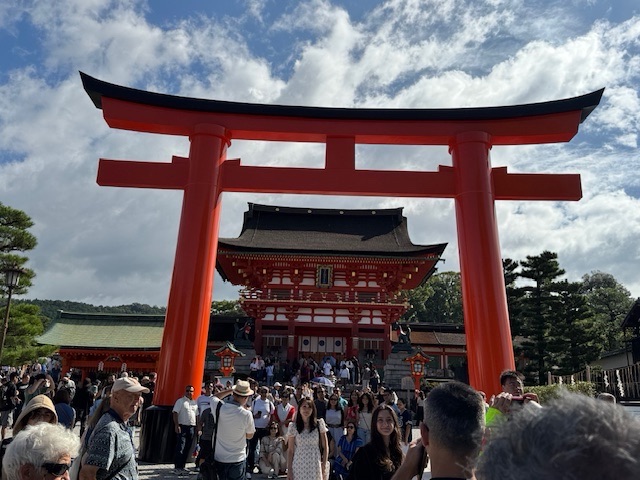
Mount Inari, covered in dense forest, rises about 764 feet. It may not be impressively tall, but the twisting tunnel of the bright red-orange torii gates winding their way up the mountain invites one to climb its magnificent slopes.
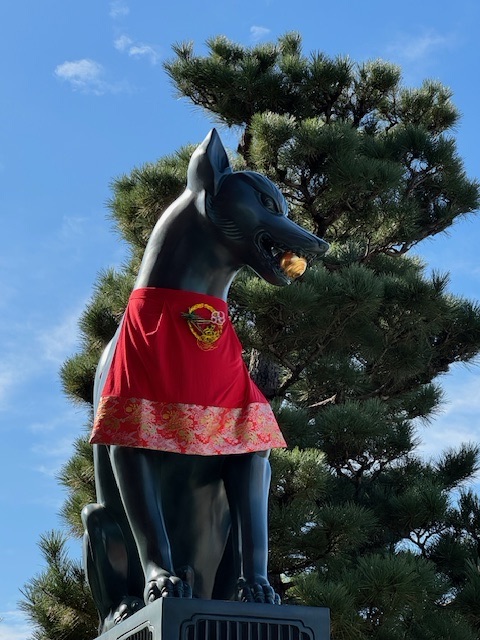
The trail takes one past small shrines, fox statues symbolizing Inari’s messengers (some with keys to rice storehouses in their mouths), and tea stalls. I pass on the 3-hour climb to the top and concentrate on shrines lower on the mountain.
Fushimi Inari Shrine
Fushimi Inari Shrine is one of Kyoto’s most iconic sights—a sprawling Shinto complex dedicated to Inari, the god of rice, prosperity, and business. At its heart stands the main shrine, dating back to 711, with elegant vermilion buildings, sweeping roofs, and filled with worshippers and tourists alike.
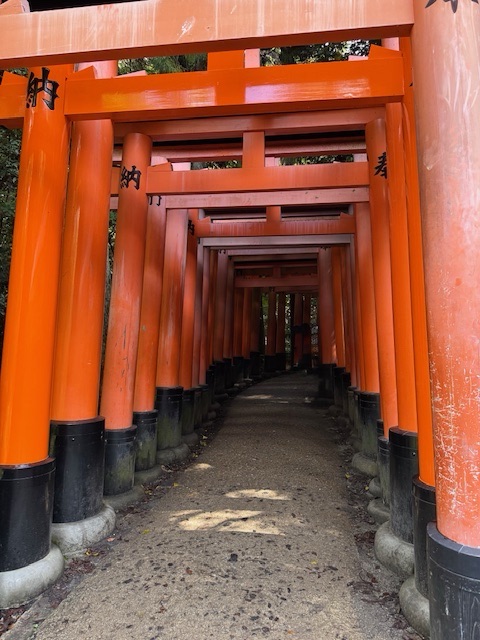
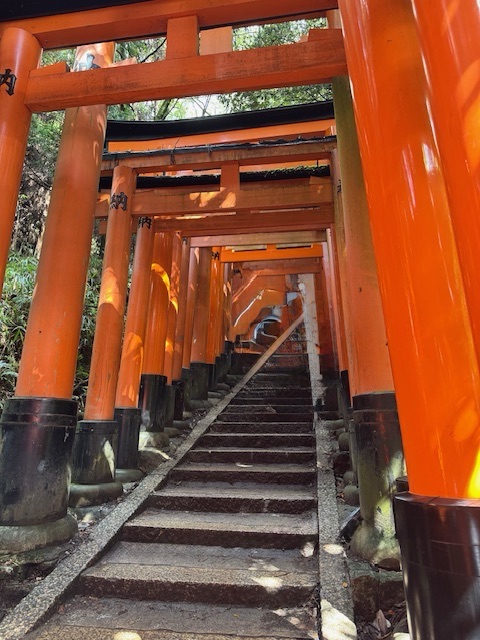
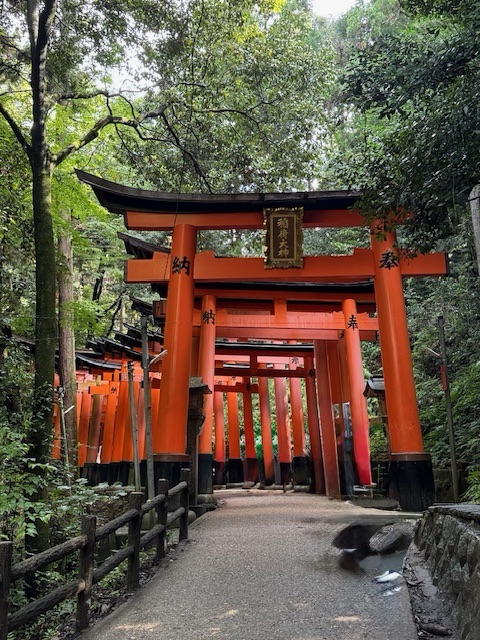
Inside, the shrine feels like walking into a world painted almost entirely in brilliant shades of red. Incense drifts through the air. One hears the ringing bells, clapping hands, and prayers to Inari. Stone foxes keep a watchful eye from every corner.
One can also hike up the forest trail to the serene pond above. The path is far less crowded. However, walking beneath the vermillion gates is most enjoyable. And the higher one climbs and walks, the fewer the people.
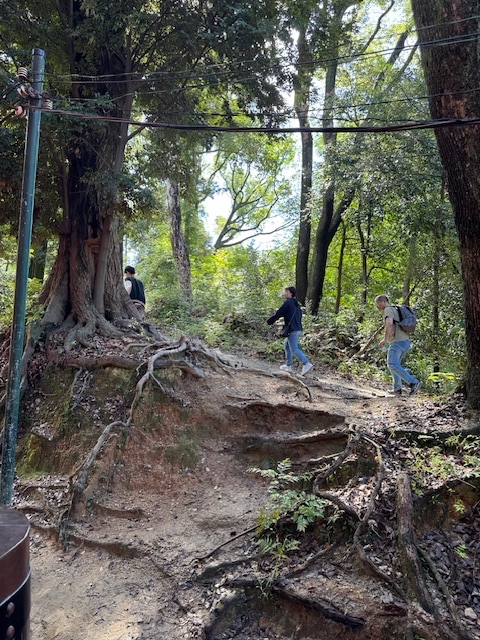
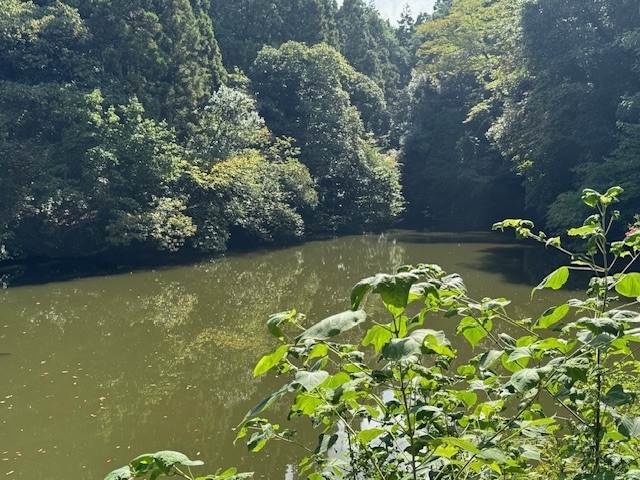
What makes the shrine unforgettable are the thousands of bright torii gates. Thousands of vermilion torii stretch before me forming a winding tunnel leading up the mountain like an endless, glowing hallway. Each was donated by businesses and individuals hoping for good fortune. I think of my BFF and what a perfect spot for some spiritual remains.
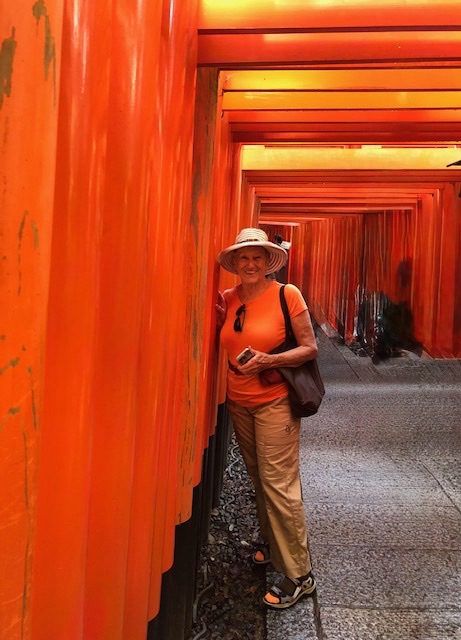
Dozens of small, quiet shrines dot the hillside. Picking a particularly nice shrine, I pat the head of the Fox and ask he not only guard the rice stores, but my BFF.
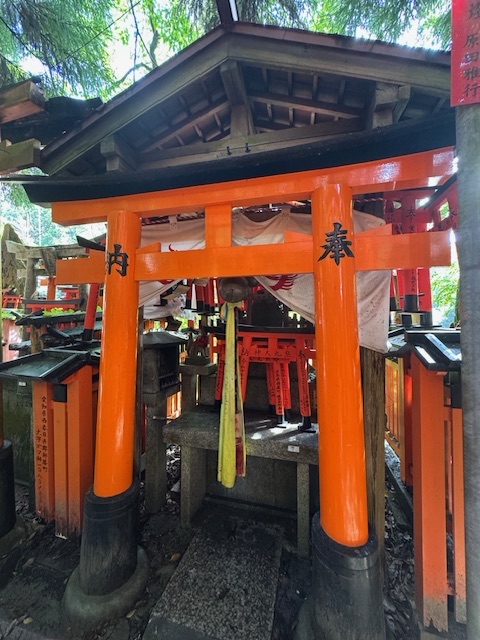
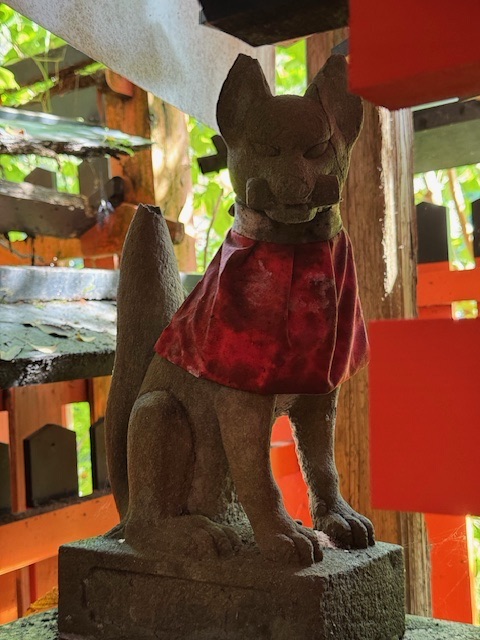
There are many more gates above me. However, the heat and humidity have returned to Kyoto. I don’t consider for a minute climbing the rest of the trail.
Instead, we walk down the street to find an ice cream shop. There, we all enjoy a delicious cone. For me, it is strawberry and a creamy topping of Cremia. Of course, we wouldn’t think of walking away licking our cones. We savor our choices then seek a trash can for little bits. For a country so very clean, trash cans are hard to find.
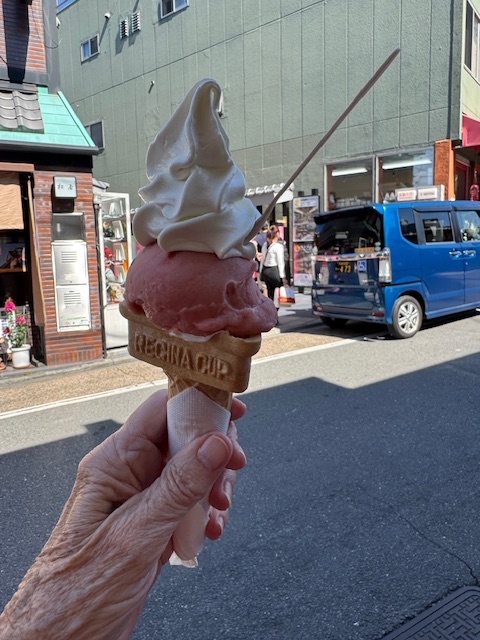
Higashiyama-ku’s Tea Ceremony
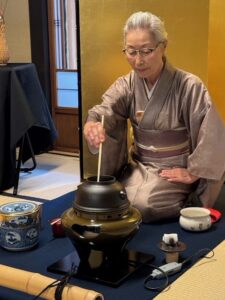
We explore the Higashiyama-ku district. It has the look and feel of feudal-era Japan. The wood-built historic neighborhood consists of narrow lanes lined with traditional pottery stores, restaurants, temples, hillside shrines, and tea houses.
We visit one of the tea houses to witness a formal tea ceremony.
The Japanese tea ceremony, or chanoyu (literally hot water for tea), maintains a long history that blends art, spirituality, and social ritual. Tea first arrived in Japan from China around the 9th century. Brought by Buddhist monks, they used tea to stay awake during long hours of meditation. Over time, powdered green tea (matcha) became popular among aristocracy and samurai elite. By the 15th and 16th centuries, tea gatherings had shifted from lavish displays of wealth to more refined, minimalist rituals.
The Japanese tea ceremony isn’t just about drinking tea. It’s stepping into a quiet little play where every gesture, every bowl, and even the silence has a role.
Right: Marife receives instructions from the Master in using two dollops of tea powder.
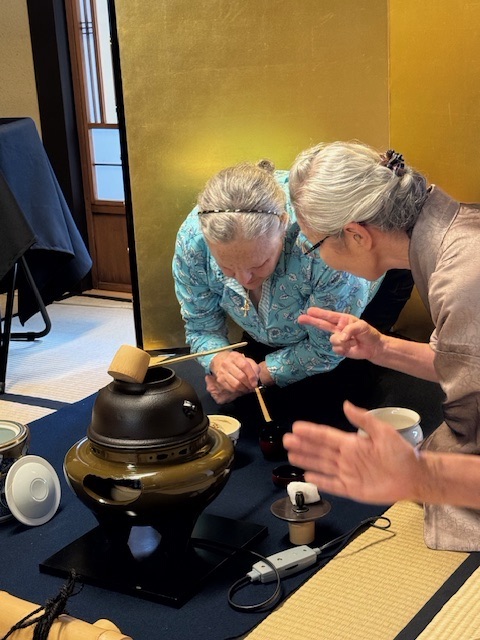
The host moves with deliberate grace, rinsing, wiping, whisking, and pouring. Guests bow, turn their bowls just so, and sip matcha—bright green, frothy, and slightly bitter tea—like it’s the most important drink in the world.
It feels part meditation, part performance, where the real focus isn’t the tea. It seems less about sipping something and more about watching a centuries-old ritual unfold with precision, grace, and a touch of drama. That works for me.
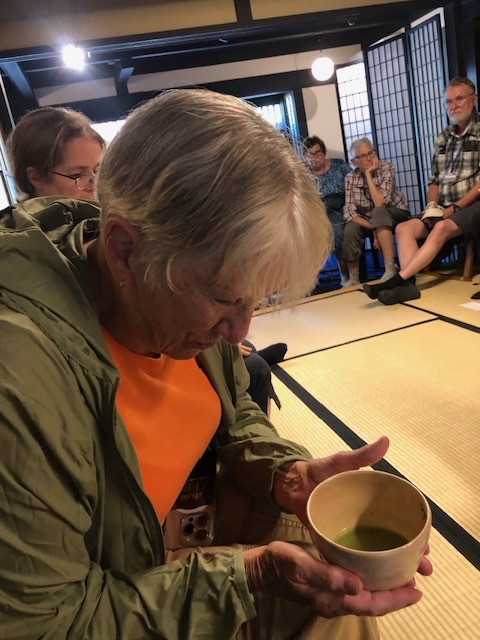
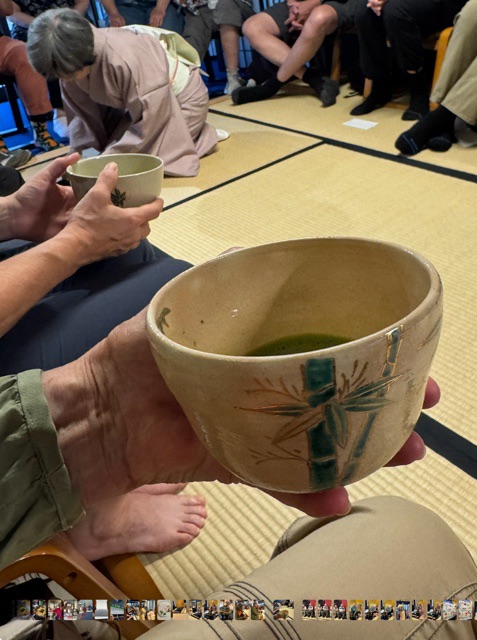
A Japanese tea ceremony may swirl with Zen philosophy, but let me be honest: I’m more of a wine-and-beer girl than a matcha-and-meditation one. Still, I get pulled into the choreography of it all—the careful whisking, the elegant cup-turning, the noisy sip. I may not crave a second sip of green grass, but I can admire the artistry.
Walk-About in Gion
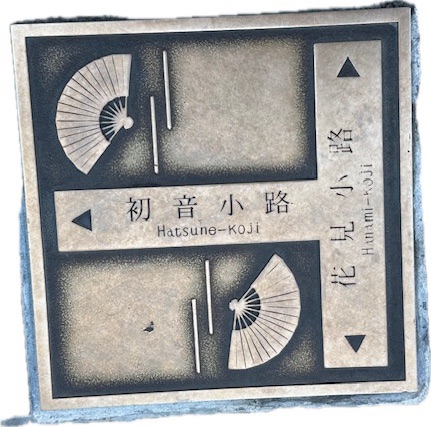
We spend our afternoon walking through the Gion district, famous for its many private restaurants (riyotei) and quiet streets where the geisha walk. Here, I am again surrounded by Japanese past and again hoards of people.
Wooden machiya townhouses line narrow lantern-lit alleys, their latticed windows hiding teahouses where traditionally clad geiko (geisha) and maiko (apprentices) silently exhibit centuries of tradition in every step. The streets hum with that mix of old-world elegance and my modern curiosity.
The security guards outside these numerous private houses tell visitors to move on. Entry is by introduction only, meaning a member must invite you. There is little to see other than posters, blank frontages, and Unwelcome signs.
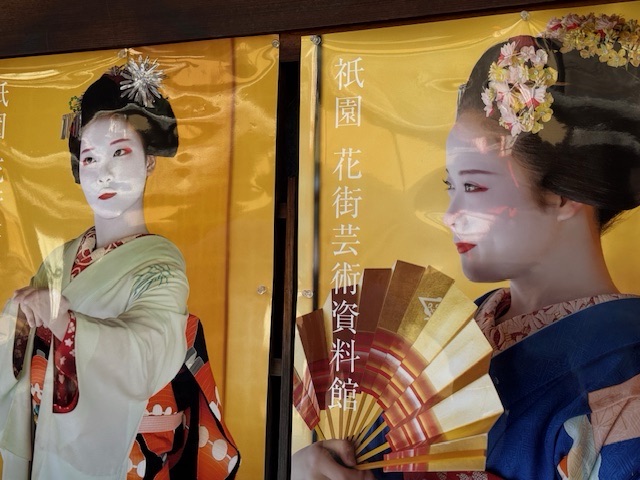
While it’s tempting to snap a quick photo of these iconic figures in kimono, it’s considered rude to take pictures without permission. They are working professionals and not a public exhibit. Not a problem as nine are to be seen. It’s a delicate dance of respect and curiosity: I want the memories, not a side-eye from a master of elegance
Kimono, Culture, Chaos – Kimono 101
The history of the Japanese kimono began in the Nara period (710-794 AD) with Chinese influences. Japanese nobility adopted layered garments in the form of the tarikubi robe. This evolved into a garment called kosode worn by all classes during the Edo period (1603-1868).
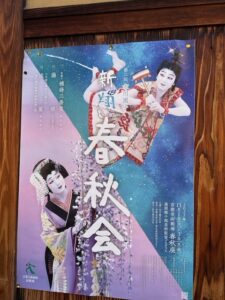
The kimono became standardized wear by the Meiji period (1868-1912). Its traditional status has diminished (strained under the influence of western dress from America), but the kimono remains a revered symbol of Japanese culture, worn for special occasions and admired for its artistry and history.
This Levi-clad westerner enrolls in Kimono 101. I quickly learn that wearing a kimono is less throw it on like a t-shirt and more navigate a 17-step puzzle with style. First, there’s the undergarments (juban), then wrapping the kimono itself left-over-right (never right-over-left—funeral style!). Next come the obi belt, tied in a variety of knots depending on occasion and gender, and accessories like obiage and obijime that keep everything snug and stylish.
Next comes walking like a geisha, how to walk in tiny narrow steps to avoid tripping, and how to sit elegantly without wrinkling the folds. Every movement feels like a delicate negotiation between me, the kimono, and my clumsy Western ways. I marvel at how much culture, grace, and patience is woven into the life of the geisha and the master in a tea ceremony.
My final grade for kimono and yukata, samue or jinbei wearing would be no higher than a D+.
Kimono-less, Saké-less, Chopstick-wicked Westerner
This traveler couldn’t be much further out of her usual casual zone. I desired this excursion to Japan for that very reason. I looked forward to exploring and learning about cultural differences between Japan and my daily existence. It has not disappointed.
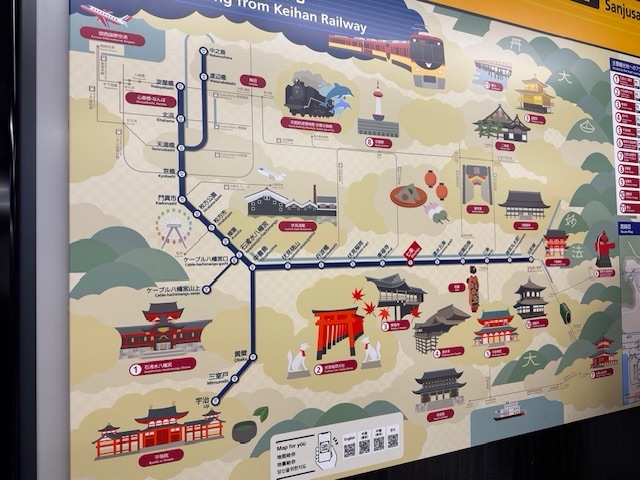
While I struggle with my chopsticks and enjoy by Asahi beer, I feel each day of travel has offered rich experiences. Japan has managed to surprise, fluster, and inspire all at once.
Unlike Buddha, who taught that desire the desire to return to a specific place can be a source of dissatisfaction, I think in this life I can cope. I think I’m more like Douglas MacArthur:
I shall return.
0 Comments